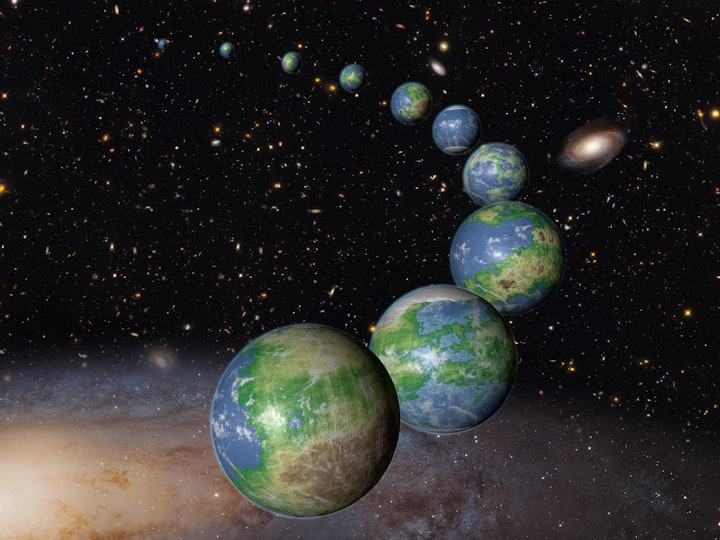Plausible, improbable, or just plain impossible? Welcome to WatchMojo. Today, we’ll be counting down our picks for the "Top 10 Doctor Who Fan Theories!"
For this list, we’ve gathered the coolest, craziest, and most convincing fan theories concerning TV’s favourite Time Lord.
#10: The Steven Moffat Theory

Now, there’s no doubting that the celebrated Doctor Who showrunner Steven Moffat is in some way responsible for all manner of majestic Who theories—but this one was born way before he took creative control of the show. Posting on a fan forum in 1995, Moffat suggested that our Earthly understanding of the word ‘doctor’, as a ‘healer and wise man”, could be a direct consequence of the Doctor’s various, heroic interventions throughout our history. Back then, Moffat described the theory as ‘particularly stupid’, but he still managed to squeeze it into the series itself.
Our Time Lord is well known for frequently flummoxing everyone else with an unexpected splurge of spaced-out nonsense, and the excitable (if inexplicable) rants are a defining part of the Doctor’s character. But what if what the Doctor says isn’t nonsense, but just the best translation that’s available. Take David Tennant’s “Timey Wimey” speech—what if the ‘wibbily wobbliness’ of it was only because Earth languages aren’t sophisticated enough to comprehend the true magnitude of time and space? The brain-busting knowledge is therefore diluted, into something we can comprehend.
#8: The Doctor likes a familiar face.

A theory almost as old as Gallifrey itself, some “Who” fans argue that Time Lord regenerations (and various physical appearances) are no random occurrence, but are in fact based on the faces of people they have encountered in the past. One of the earliest examples of this was The Fourth Doctor's Time Lord companion Romana, who regenerated to resemble the appearance of Princess Astra of Atrios. Offering a handy reason as to why some Who actors are recycled in the series too, the theory gained extra clout during Peter Capaldi’s time in the TARDIS—thanks to the “Fires of Pompeii” episode, which was later expanded upon in "The Girl Who Died."
#7: The Doctor and The Master

A recurring character throughout the original series and since the 2005 reboot, The Master’s relationship with the Doctor is famously tricky to pin down. On the one hand the character craves total domination, on the other he (or she) and the Doctor go way back. Most indications suggest that they were good pals on Gallifrey, until they drifted considerably apart. But there have been hints toward a romantic past too, while some fans suggest that they could be siblings—or that the Master is the Doctor, at a different point in his timeline. Stranger things have happened.
#6: Mary Poppins is a Time Lord.

Only Mary’s TARDIS is her magical umbrella. Let’s review the evidence: She arrives out of nowhere, she strives to do good, she interacts with other creatures, her sense of fashion is distinctly Doctor-ish, she can physically enter into artworks, and her handbag is bigger on the inside—need we say more? And Poppins isn’t the only pop culture character the internet has linked with Gallifrey. There’s also James Bond, Ash Ketchum, Barty Crouch Jr., and even Tommy Pickles from Rugrats—if only for his multi-purpose screwdriver.
A theory which is sure to gather pace during Jodie Whittaker’s time in the TARDIS, the Doctor’s gender (if there even is one) has triggered constant speculation. Until 2017, the role had always been played by male actors; but at the beginning of season nine, Missy appears to reveal that there was a time when the Doctor was a ‘little girl’—but do we trust her? Either way, possible explanations as to why the Doctor has historically been male include links to a faulty Chameleon Circuit on the TARDIS, and his previously mentioned tendency to mimic the face of a former (or future) Time Lord.
#4: The Weeping Angels are Fallen Time Lords.

They’re one of the most feared monsters in the entire series, but could the Weeping Angels actually be Time Lords themselves? This theory mostly tracks back to “The End of Time: Part Two,” when Timothy Dalton’s Rassilon references ‘the Weeping Angels of old’. The Angels are pitched as a punishment for Time Lords comparable to death, while Dalton is flanked by two figures hiding their faces—one of which may (or may not) be the Doctor’s mother. Considering that the Angels are also extremely old (like the Time Lords) and they feed on time energy, it’s not exactly impossible.
While William Hartnell’s Doctor is widely accepted as the original, even in his character’s own words, some Whovians believe that the first Doctor we meet isn’t the Time Lord’s first incarnation. Linking to today’s earlier theory on the Doctor’s history as a little girl, it’s suggested that the time-traveller had undergone various regenerations before he took Hartnell’s form. It is possible for the Doctor to receive a new cycle of regenerations, so why shouldn’t the same thing have happened in his younger days? And if so, could the Doctor ever encounter (or even become) a pre-Hartnell character?
#2: The Doctor’s name is his timeline.

The Doctor’s name is an ever-evolving mystery. Of course, River Song has long been in the know, but the rest of us can only guess at what she whispers. Some say it’s ‘42’, providing a link between the Doctor and The Hitchhiker’s Guide to the Galaxy, beyond the fact that Douglas Adams was once a Who writer. But we’re particularly partial to the notion that the name is actually a map of everywhere the Doctor has ever been, or will ever go—so it represents infinite wisdom. How River condensed that into a couple of seconds, we’ll never know.
They’re the Doctor’s greatest enemy, and they could’ve exterminated our hero on countless occasions. So why haven’t the Daleks ever finished the job? Some say it’s because they can’t. The theory starts back in 1975, when Tom Baker famously refuses to annihilate the Daleks. Fast forward to 2015, and Peter Capaldi opts to save a young Davros, too. So, the Daleks don’t kill the Doctor because if they did, he can’t save them and they might erase themselves from existence—that, and Daleks supposedly have an ingrained respect for their creator, who could also be the Doctor. It’s a problem wrapped in a paradox, and we love it!
Do you agree with our picks? Check out other great clips from WatchMojo UK and subscribe for more great content.
About the Creator
WatchMojo
Bringing you new top 10s every day. Subscribe today on Youtube.






Comments
There are no comments for this story
Be the first to respond and start the conversation.